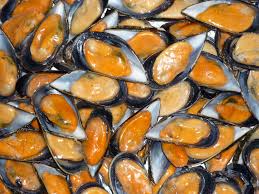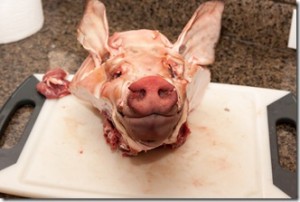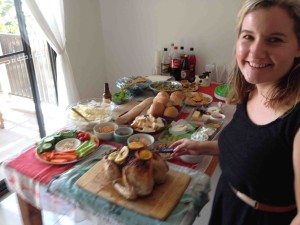In the first seven weeks of 2016, six cases of invasive listeriosis were recorded in Ancona province, Italy. Five strains of Listeria monocytogenes serotype 1/2a were isolated and typed by enterobacterial repetitive intergenic consensus (ERIC)-PCR and PFGE, indicating clonality. In addition, seven serotype 1/2a L. monocytogenes strains from cases of invasive listeriosis recorded in the same area in 2015 were also typed and showed relatedness. Here we provide details of the ongoing outbreak.
 From 4 January to 15 February 2016, six L. monocytogenes strains (3 from blood, 3 from cerebrospinal fluid (CSF)) were isolated from six patients diagnosed with invasive listeriosis at the Clinical Microbiology Laboratory of Ancona Regional Hospital (eastern Italy) of Area Vasta 2 (AV2) which encompasses Ancona, Fabriano, Senigallia, and Jesi.
From 4 January to 15 February 2016, six L. monocytogenes strains (3 from blood, 3 from cerebrospinal fluid (CSF)) were isolated from six patients diagnosed with invasive listeriosis at the Clinical Microbiology Laboratory of Ancona Regional Hospital (eastern Italy) of Area Vasta 2 (AV2) which encompasses Ancona, Fabriano, Senigallia, and Jesi.
Patients had been admitted to four different departments: emergency room (ER) (n=2), oncology (n=2), infectious diseases (n=1), and intensive care unit (ICU) (n=1). Four of the six patients were women and the most common risk factors/underlying conditions were: age (n=5; >71 years), cancer (n=2), and diabetes (n=1). Clinical manifestations included septicaemia (n=3), meningitis (n=2) and meningoencephalitis (n=1).
In addition to the cases detected in 2016, eight L. monocytogenes strains (5 from blood and 3 from CSF) had been isolated in AV2 (from 7 cases) and nearby Ascoli Piceno (from 1 case) in 2015 (Figure 1); clinical samples came from six hospital departments: ER (n=1), general medicine (n=3), nephrology (n=1), vascular surgery (n=1), infectious diseases (n=1), and ICU (n=1). Five patients were men and the mean patient age was 73.6 years (range: 55–84; median: 75); a 77 year-old man died.
The 2015 and 2016 isolates were identified as L. monocytogenes by Gram staining and the Vitek MS system (bioMérieux Italia SpA, Firenze, Italy). Susceptibility to ampicillin, meropenem, erythromycin, and sulphamethoxazole-trimethoprim was tested by the E-Test (Liofilchem, Teramo, Italy) according to the European Committee on Antimicrobial Susceptibility Testing (EUCAST) guidelines [1]. All strains were susceptible to all the antibiotics tested.
The incidence of listeriosis has been rising since the early 2000s in several European countries, mainly in immunocompromised patients older than 65 years [7-9]. In particular, a statistically significant increase was reported in Austria, Denmark, Hungary, Italy, France, Spain, and Sweden from 2005 to 2009 [10]. In the past 30 years, outbreaks of listeriosis have been mostly linked to serotype 1/2a and 4b clones [8]. A shift to serotype 1/2a has been observed in Europe and North America in the last decade [8]. In Italy, surveillance of invasive listeriosis has found an increase in serotype 1/2a isolates over the same period, mainly in the central and northern regions (about 80% of cases) [10-14].
Listeriosis is an infection of great concern to public health due its clinical severity and high case fatality rate, despite its low incidence compared with other foodborne diseases such as salmonellosis or campylobacteriosis. The present data suggest an ongoing outbreak of listeriosis due to serotype 1/2a L. monocytogenes in AV2 that most probably started in 2015, since the strain was already present in the area in 2015. As in other European countries, most cases were associated with an underlying condition and involved elderly people [8,9].
Local authorities are working with the Italian national public health institute (the Istituto Superiore di Sanità, Rome) and the regional Istituto Zooprofilattico Umbria and Marche to identify the sources of food contamination. A recent press release [15] points out that there are findings which suggest contamination of a pork product as a possible vehicle of infection for at least one human case. At present, however, no clear link can be established between the contaminated pork product and the infections. Investigation into the source of infection in AV2 is still in progress.
Ongoing outbreak of invasive listeriosis due to serotype 1/2a Listeria monocytogenes, Ancona Province, Italy, January 2015 To February 2016
28 April 2016
Eurosurveillance, Volume 21, Issue 17
E Marini, G Magi, C Vincenzi, E Manso, B Facinelli
http://www.eurosurveillance.org/ViewArticle.aspx?ArticleId=22460










